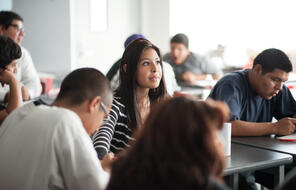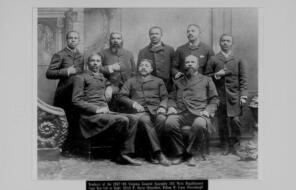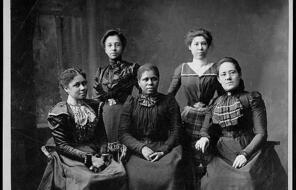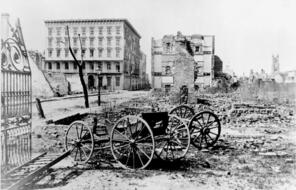Climate Change and Levers of Power
At a Glance
Language
English — USSubject
- History
- Social Studies
- Democracy & Civic Engagement
-
Government
The following is excerpted from the Wired article “Deadly Heat Is Baking Cities. Here’s How to Cool Them Down” by Matt Simon.
If you’ve ever driven from the country into the city and marveled at how the temperature dramatically spiked, you’ve felt the urban heat island effect. The streets and buildings of a metropolis absorb the sun’s energy during the day and gradually release it at night. The built environment essentially bakes itself, and temperatures can soar as much as 20 degrees Fahrenheit higher than the surrounding country, which benefits from swaths of trees that “sweat,” releasing water vapor and cooling the air.
As global temperatures rapidly climb, scientists, governments, and activists are scrambling for ways to counter the heat island effect. According to the World Health Organization, the number of people exposed to heat waves jumped by 125 million between 2000 and 2016. Extreme heat kills more Americans than any other natural disaster, and is especially dangerous for folks with preexisting conditions like asthma.
. . . [E]ven within cities, one neighborhood might be 15 degrees hotter than another, and that disparity maps to income inequalities. A major predictor of a neighborhood’s heat is how much green space it has. Richer parts of a city tend to have more greenery, and poorer parts have more concrete; they’re heavily developed, and filled with big box stores, freeways, and industrial facilities that soak up the sun’s radiation. A concrete landscape is so good at holding onto heat, in fact, that it’ll stay warm through the night. When the sun comes up, a poor neighborhood is already hotter than a rich neighborhood.
. . .
There’s [a] seemingly simple solution that cities could deploy [to reduce urban heat]: Plant more living things. Done right, a green space creates a slew of benefits: It cools a neighborhood and beautifies it, while also acting as a sponge to absorb floodwaters. It provides shade for people to shelter in during a heat wave, plus it’s good for mental health. Building the space creates jobs, as does maintaining it. And lower temperatures reduce the demand for air conditioning, which is a major source of emissions, as well as of heat, because of all the hot air the machines expel as they work. Elizabeth Sawin, codirector of Climate Interactive, a nonprofit that focuses on the intersection of climate change and inequity, calls this “multisolving.”
But planting greenery, too, can have an unintended consequence—it’s known as green gentrification. Urban investment attracts the attention of speculators, who start buying up housing in low-income neighborhoods, driving up rents. “Then the people in the very neighborhood the investment was meant to help get displaced off into places that are heat islands or other kinds of climate risk zones,” says Sawin.
Sawin says that plans to increase green spaces should involve local residents at the very earliest stages. “It can't be a siloed approach. It has to combine pre-thinking about affordable housing or community-owned land trusts. And that needs to happen well in advance of the first shovels of the project,” she says. 1
Discussion questions:
- What impact would this policy have on the environment or climate change? What impact would it have on people’s lives?
- What could be the challenges of enacting this policy?
- What are some other actions governments can take to protect the environment or combat climate change?
- What tools could young people use to influence the government to pass legislation?
-
Nonprofit Organizations
The following is excerpted from the LA Times article “Protesters dump dirt at courthouse to oppose Exide plant abandonment” by Tony Barboza.
Residents of the massive cleanup zone surrounding the shuttered Exide battery recycling plant in Vernon marched to downtown Los Angeles on [October 18, 2021] to protest a bankruptcy court’s decision to allow the company to abandon the heavily contaminated site.
Some brought plastic bags of dirt from lead-polluted yards, throwing them over a fence onto the steps of the federal courthouse at North Main and West Temple streets.
“These are donations from the Exide-impacted area,” said Mark Lopez, co-director of East Yard Communities for Environmental Justice, which organized the protest.
The demonstration drew about 150 people, many of them from southeast Los Angeles County communities riddled with lead contamination from decades of air pollution from the closed Exide Technologies facility.
. . .
The U.S. Department of Justice supported Exide’s bankruptcy plan, approved Friday by a Delaware bankruptcy court, which allows the company to walk away from its half-demolished facility and leave the expensive toxic cleanup to California taxpayers. The judge concluded that the site is not an imminent threat to the public.
The decision infuriated Guadalupe Valdovinos, 35, whose home in East L.A. is sandwiched between two neighboring properties that have not been cleaned. She attended the protest with her 11-year-old daughter and brought a small bag of soil from her neighbor’s yard, where high lead levels were detected.
“Why is it OK for us to live in poison?” Valdovinos said. “To me, that’s an imminent threat. But we just don’t matter. We’re collateral damage.”
. . .
Protesters also excoriated state regulators who allowed the Vernon plant, which melted down used car batteries, to operate for decades without a full permit, despite repeated violations of air pollution limits and hazardous waste laws. Exide agreed to close the plant permanently in 2015 in a deal with federal prosecutors to avoid criminal prosecution for years of illegal activity.
Since then, residents from half a dozen communities have fought state toxic waste regulators to get their yards cleaned. About 2,000 residential properties have had contaminated soil removed, but thousands more with lead levels above state limits remain uncleaned. 2
Discussion questions:
- What impact could cleaning up toxic waste have on the environment? What impact would it have on people’s lives?
- What could be the challenges of cleaning up toxic waste?
- What are some other actions that local nonprofit organizations can take to protect the environment or combat climate change?
- How can young people participate in the work of local nonprofits?
-
Schools and Education
The following is excerpted from the CAI (local NPR for the Cape, Coast, and Islands) article “Teens Fight For New Climate Change Curriculum in Mass. Schools” by Eve Zuckoff.
Every week, more than a dozen student activists from around Massachusetts call into a Zoom meeting. Behind them are glimpses into their lives–superhero posters and hot pink bedroom walls.
“OK. So do we want to start off today's meeting with an agenda?” asked Nico Gentile, the 17-year-old climate organizer running today's meeting.
The Sandwich teen isn’t new to managing groups. Last year, Gentile helped bring together 100 students from 10 schools for the first-ever Cape and Islands Youth Climate Action Summit.
“Through that, I was able to see how beneficial and how important learning about climate change is, mostly because it kind of sparks a fuse to create action within your community,” Gentile said in an interview. “And I asked myself the question, ‘Why don't we do this more in our own schools?’”
In April, this question pushed Gentile to launch the Massachusetts Climate Education Organization (MCEO). He’s recruited students statewide, from urban areas to suburbs, from public schools and private schools.
They’re now working together to convince Massachusetts lawmakers to pass legislation that would require all of the state’s schoolchildren, from kindergarteners through 12th grade, to learn about climate change, climate justice, and environmental racism.
“I see a bit of myself in some of these high school students. There's a real passion,” said state Sen. Julian Cyr, who represents the Cape and Islands. This fall, Cyr agreed to sponsor MCEO’s climate education bill in the Massachusetts Legislature.
. . .
The student group is also working with the Department of Elementary and Secondary Education. Gentile said the state doesn’t currently provide teachers with enough materials to teach students about climate change and climate justice.
“So we're actually going to be working with them to provide new and better resources for teachers to use in their own classrooms,” he said.
. . .
The bill is set to be filed in January, but looming over the process is the fact that around 10,000 bills are filed every legislative session, and only about 8 percent of those get signed into law.
Despite the odds, Nico Gentile is determined to get it done.
“We don't have 20 years for students to start being educated on this. We need it now. Because in 20 years, who knows where Cape Cod specifically could be. We've already seen beaches be completely eroded. And after the beaches obviously comes houses, which is horrible and crazy to think about,” he said . . . 3
Discussion questions:
- What impact could climate change curriculum have on the environment or climate change? How does what students learn in schools influence society?
- What could be the challenges of creating new climate change curriculum?
- What are some other actions that schools can take to protect the environment or combat climate change?
- How can young people influence their school curriculum or policies?
- 1Matt Simon, “Deadly Heat Is Baking Cities. Here’s How to Cool Them Down,” Wired, October 11, 2021.
- 2Tony Barboza, “Protesters dump dirt at courthouse to oppose Exide plant abandonment” by Tony Barboza, Los Angeles Times, October 19, 2021.
- 3Eve Zuckoff, “Teens Fight For New Climate Change Curriculum in Mass. Schools,” CAI, November 4, 2021.
How to Cite This Reading
Facing History & Ourselves, "Climate Change and Levers of Power," last updated December 3, 2021.
This reading contains text not authored by Facing History & Ourselves. See footnotes for source information.












